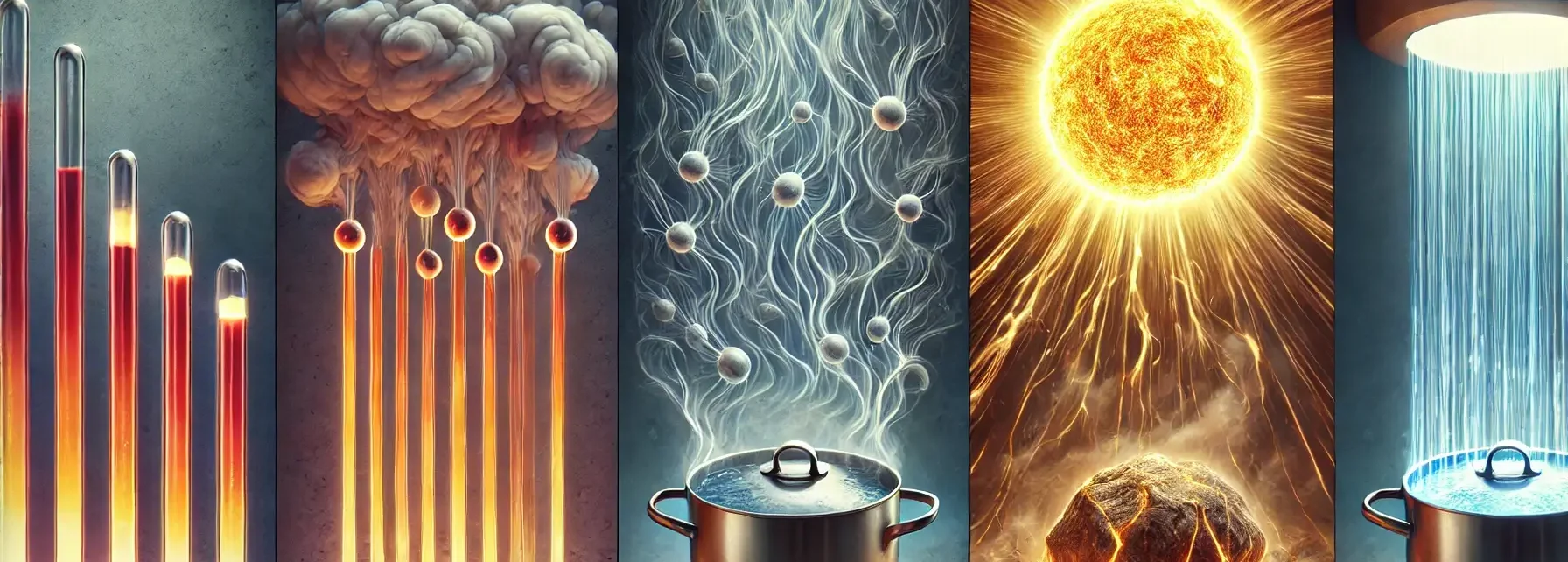Heat Transfer Mechanisms Methods
Conduction in Heat Transfer Mechanisms
- Definition: Transfer of heat through a material without any movement of the material itself.
- Mechanism: Occurs due to the transfer of kinetic energy between molecules or atoms.
- Examples: Heat flowing through a metal rod when one end is heated.
- Factors: Thermal conductivity of the material, cross-sectional area, temperature gradient, and thickness.
Convection
- Definition: Transfer of heat by the physical movement of a fluid (liquid or gas).
- Mechanism: Warmer fluid becomes less dense and rises, while cooler fluid sinks, creating a convective current.
- Examples: Boiling water, where hot water from the bottom rises to the top.
- Factors: Fluid properties (density, viscosity), temperature difference, surface area, and gravity.
Radiation
- Definition: Transfer of heat in the form of electromagnetic waves without the need for a medium.
- Mechanism: Emission of infrared radiation from the surface of an object.
- Examples: Heat from the sun reaching the Earth, heat from a fireplace.
- Factors: Surface temperature, emissivity of the material, surface area, and the temperature of surrounding objects.

